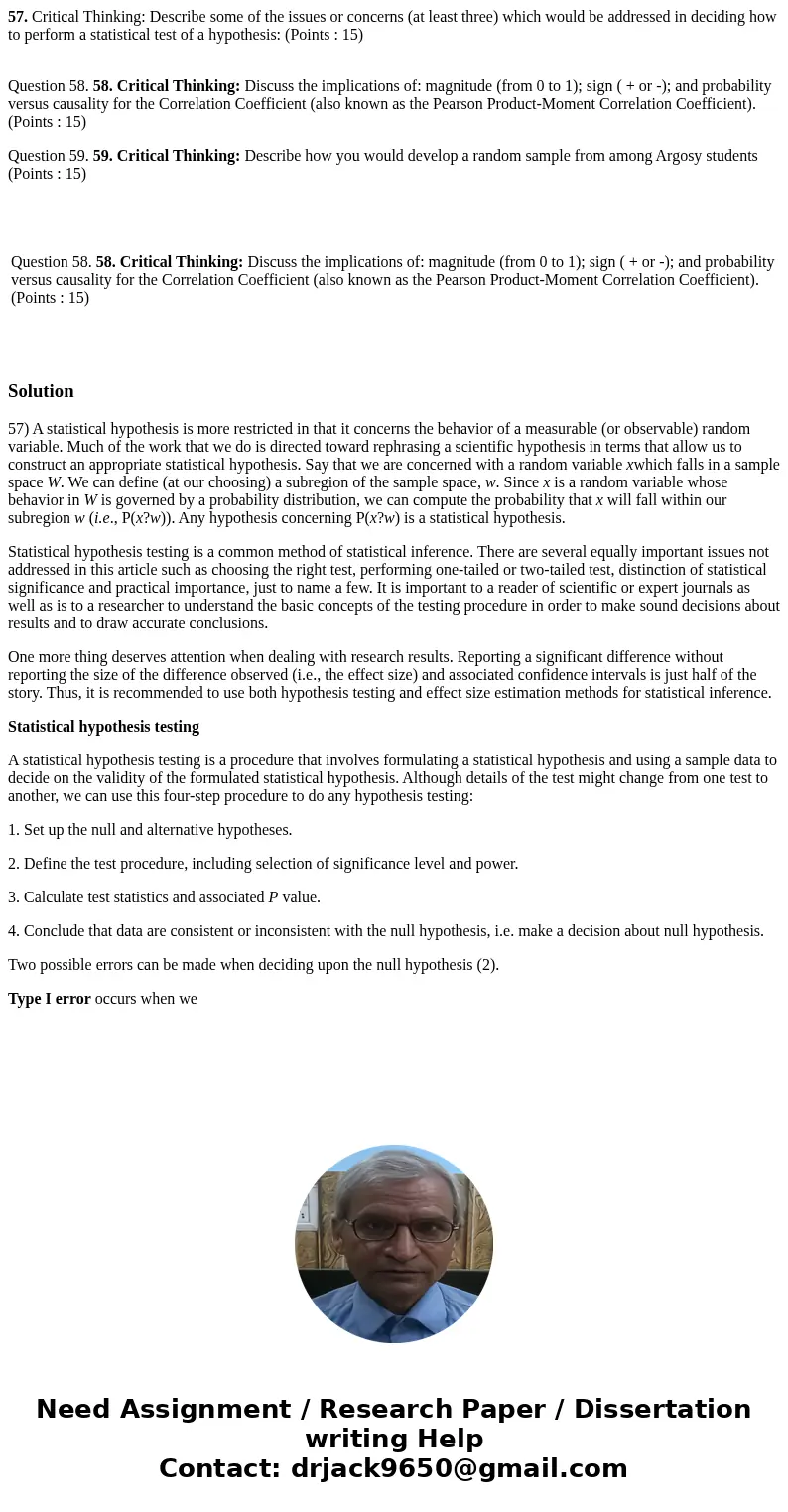57 Critical Thinking Describe some of the issues or concerns
57. Critical Thinking: Describe some of the issues or concerns (at least three) which would be addressed in deciding how to perform a statistical test of a hypothesis: (Points : 15)
Question 58. 58. Critical Thinking: Discuss the implications of: magnitude (from 0 to 1); sign ( + or -); and probability versus causality for the Correlation Coefficient (also known as the Pearson Product-Moment Correlation Coefficient). (Points : 15)
Question 59. 59. Critical Thinking: Describe how you would develop a random sample from among Argosy students (Points : 15)
| Question 58. 58. Critical Thinking: Discuss the implications of: magnitude (from 0 to 1); sign ( + or -); and probability versus causality for the Correlation Coefficient (also known as the Pearson Product-Moment Correlation Coefficient). (Points : 15) |
Solution
57) A statistical hypothesis is more restricted in that it concerns the behavior of a measurable (or observable) random variable. Much of the work that we do is directed toward rephrasing a scientific hypothesis in terms that allow us to construct an appropriate statistical hypothesis. Say that we are concerned with a random variable xwhich falls in a sample space W. We can define (at our choosing) a subregion of the sample space, w. Since x is a random variable whose behavior in W is governed by a probability distribution, we can compute the probability that x will fall within our subregion w (i.e., P(x?w)). Any hypothesis concerning P(x?w) is a statistical hypothesis.
Statistical hypothesis testing is a common method of statistical inference. There are several equally important issues not addressed in this article such as choosing the right test, performing one-tailed or two-tailed test, distinction of statistical significance and practical importance, just to name a few. It is important to a reader of scientific or expert journals as well as is to a researcher to understand the basic concepts of the testing procedure in order to make sound decisions about results and to draw accurate conclusions.
One more thing deserves attention when dealing with research results. Reporting a significant difference without reporting the size of the difference observed (i.e., the effect size) and associated confidence intervals is just half of the story. Thus, it is recommended to use both hypothesis testing and effect size estimation methods for statistical inference.
Statistical hypothesis testing
A statistical hypothesis testing is a procedure that involves formulating a statistical hypothesis and using a sample data to decide on the validity of the formulated statistical hypothesis. Although details of the test might change from one test to another, we can use this four-step procedure to do any hypothesis testing:
1. Set up the null and alternative hypotheses.
2. Define the test procedure, including selection of significance level and power.
3. Calculate test statistics and associated P value.
4. Conclude that data are consistent or inconsistent with the null hypothesis, i.e. make a decision about null hypothesis.
Two possible errors can be made when deciding upon the null hypothesis (2).
Type I error occurs when we

 Homework Sourse
Homework Sourse